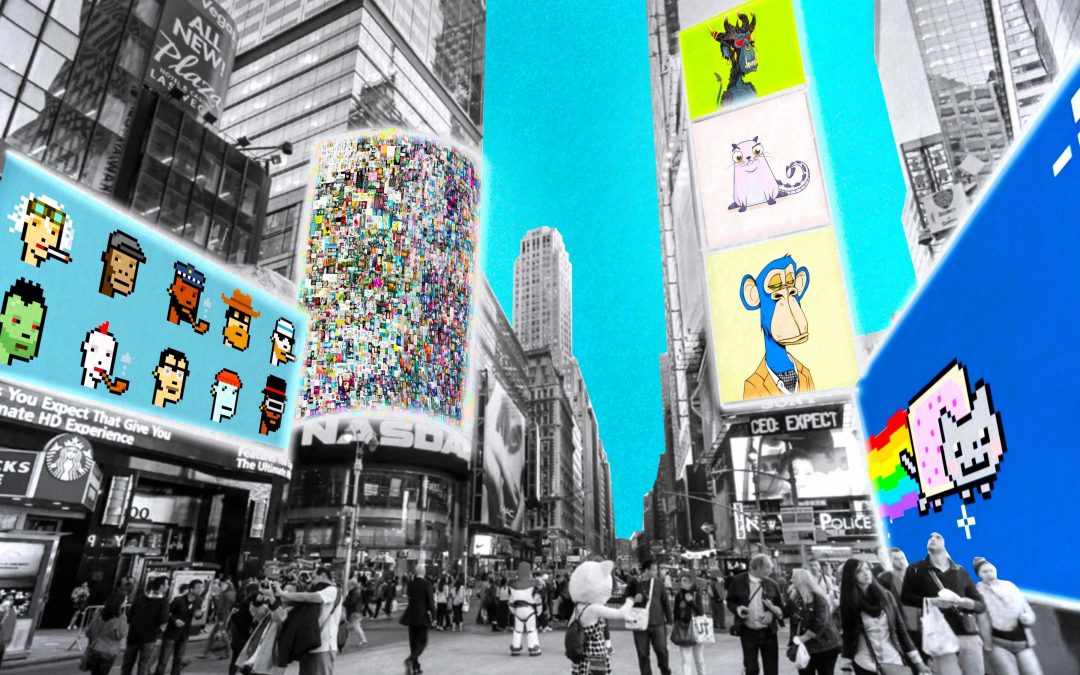It’s hard to find words to describe the crypto phenomenon that New York is witnessing right now.
This week’s NFT.NYC conference, which was first held in February 2019 as a quirky curiosity before an audience of a few hundred early enthusiasts, was spread across six venues, with three days of programming covering 600 speakers. Some 5,500 tickets were sold – with space limitations leaving 3,000 more on the waitlist – to attendees who traded 700,000 speaker and sponsor swag NFTs.
You’re reading Money Reimagined, a weekly look at the technological, economic and social events and trends that are redefining our relationship with money and transforming the global financial system. Subscribe to get the full newsletter here.
There were 15 different NFT-themed billboards in Times Square. There were parties, dinners, EDM raves and digital art galleries around town, many of which boasted NFT-promoting film and music stars. And there were countless newly created projects promoting everything from royalty solutions for musicians to whisky-backed NFTs. It was a carnival of innovation, a sprawling celebration of possibility.
But what is it all pointing to?
The most striking aspect of all this is how rapidly this industry has sprung up, seemingly out of nowhere, spawning new business models and inventions built on top of those new ideas. That’s what makes the evolution of this space so difficult to predict.
Yet with that caveat in mind, I do think it’s worth reflecting on a few takeaways from the event, to try to make some sense of it all:
The power of evangelism
On our “Money Reimagined” podcast this week, Sam Ewen, head of CoinDesk Studios, used that religious term to describe how NFT enthusiasts share introductions, ideas, concepts and NFTs themselves, all of which are helping to grow the space at a rapid clip. It’s not purely altruistic because there are real tangible network effects that come from wider adoption, which boosts the value of the assets in question. But there’s also little doubt that the NFT community is truly passionate about this industry and that passion is a driver of its growth.
Ethereum is king
But for how much longer? There are various blockchains now servicing the NFT industry, but the undisputed king is still Ethereum. It’s little coincidence that ETH jumped to new record highs this week amid the hubbub around NFT.NYC. But the question is whether this leadership will be sustained. Gas fees – the costs of transacting – are often prohibitively high on Ethereum, because of network congestion. Newcomers in the space who landed here via the conference would have been shocked to discover that the fees often exceed the value of the NFT being traded. Newer blockchains such as Flow, Avalanche and Solana are now competing to offer lower-priced transfers and attracting more NFT action. Notably, the tokens of the latter two also soared this week.
When interoperability?
It’s all very well for business to migrate from Ethereum to Solana, but the risk is that in doing so we just build isolated silos that do not allow people to move their assets around. To make matters worse, even within blockchains, access to the art attached to NFTs is often contingent on terms set by the marketplaces or platforms built on top of them. So, people end up being forced to stay within those environments. The worry is that this technology, supposedly a pathway to the Web 3 future, is just leading to a new version of the old, Web 2 walled garden platforms.
The dominant marketplace, OpenSea, for example, is very well funded by venture capital firms such as Andreessen Horowitz, which have historically made their money investing in companies that follow Web 2 centralizing strategies. What’s needed are both protocols and standards that allow for interoperable asset transfers. The first is coming by way of protocols such as Polkadot, but there also needs to be a will to build in this way and to give up on monopoly interests. Hopefully, the evangelistic spirit and the desire to maximize network effects will drive people in that direction.
The metaverse? A metaverse?
Everyone in NFT land is talking about the metaverse, a term first coined by author Neal Stephenson, to describe the concept of a new digital existence. NFTs are seen as a kind of “property right” building block for that idea. Now Mark Zuckerberg, CEO of the newly renamed Meta (aka Facebook), claims to be building it. But it seems antithetical to the concept that this digital place would be controlled by proprietary interests. Maybe Facebook is building a version of the metaverse, but not the metaverse. Related to the prior point, we need an open metaverse. It’s nice to see Cyprus’ University of Nicosia, which was a trailblazer in providing blockchain courses, now leading the way on this topic with its Open Metaverse Initiative.
The power of celebrity
No matter how open these platforms are, we’re still going to face the reality that the real centralizing of power in the art and entertainment industry lies in the power of celebrity. That was brought home with the mania stirred up by big names turning up at NFT.NYC: Quentin Tarantino, with his “Pulp Fiction” NFT drop, a sold-out performance by Kaskade, and a Bored Ape Yacht Club-sponsored event featuring The Strokes, Lil Baby, Beck, Chris Rock, Aziz Ansari and Questlove.
In sum, while this conference showcased the frenetic innovation that makes NFTs a promise for a new, more decentralized digital economy, we will continue to confront some of the Old World human challenges within competing interests as the technology develops.














